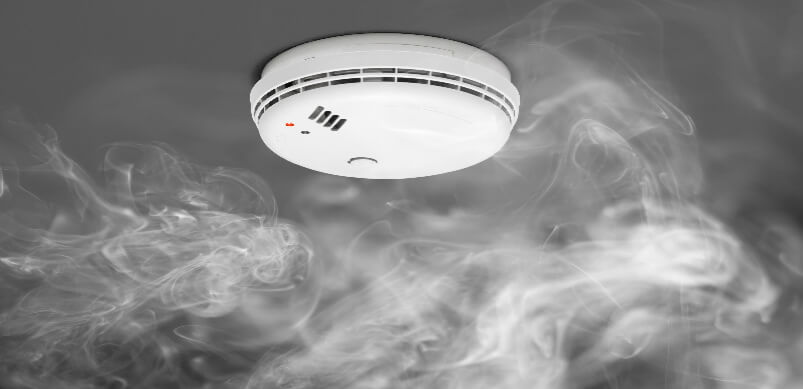
How to Protect Your Family from Carbon Monoxide Poisoning
November 25, 2015 | Appliance Safety Advice & Recalls | DIY & Home Improvement | No comments
Carbon monoxide poisoning is one of the biggest causes of death by poisoning in the UK, with an estimated 200 people being taken to hospital for treatment each year, and a further 40 deaths being recorded.
Whilst it is one of the biggest causes of death, by being aware of it and knowing the symptoms, you can prevent you and your loved ones from becoming another statistic. To help, in this post we look at:
- What is Carbon Monoxide Poisoning
- Spotting the Symptoms of Carbon Monoxide Poisoning
- 4 Reasons Carbon Monoxide Poisoning Happens
- How to Protect Your Family from Carbon Monoxide Poisoning
- What to do if Your Carbon Monoxide Detector Goes Off
What is Carbon Monoxide Poisoning?
Carbon monoxide poisoning is known as the silent killer due to the gas being odourless and colourless.
Unfortunately, such poisoning can occur, and be fatal, even when you breathe even the smallest amount of carbon monoxide in due to the gas getting into the blood stream and preventing your red blood cells from carrying oxygen.
It’s worth noting that whilst everyone is at risk of such poisoning, higher risk groups include:
- Babies / Young Children
- Pregnant Women
- People with Chronic Heart Disease
- People with Respiratory Problems (e.g. asthma)
Spotting the Symptoms of Carbon Monoxide Poisoning:
The symptoms of carbon monoxide poisoning are very similar to having the flu, a virus or food poisoning, but being aware of the differences could save your life, and the 6 main symptoms are:
- Headaches
- Dizziness
- Nausea
- Breathlessness
- Collapsing
- Loss of Consciousness
[source: http://www.gassaferegister.co.uk/learn/carbon_monoxide_kills.aspx]
Further signs of carbon monoxide poisoning in your property include:
- A number of people in the property falling ill with similar symptoms
- Symptoms disappear when you go away on holiday but return when you come back
- Symptoms are seasonal, for example appear during winter when the heating is used more
4 Reasons Carbon Monoxide Poisoning Happens:
There are 4 primary causes for carbon monoxide poisoning occurring within homes in the UK, and these are:
- Poorly maintained gas appliances
- Incorrectly installed gas appliances
- Poorly ventilated gas appliances
- Blocked flues and chimneys
Signs your gas based appliances could be providing an increased risk of causing such poisoning include black / sooty marks around the front covers of gas fires, sooty marks on walls around your boilers, stoves and fires, and flames from your gas appliances burning yellow instead of blue. [source: http://www.which.co.uk/home-and-garden/heating-water-and-electricity/guides/carbon-monoxide-detectors/]
How to Protect Your Family from Carbon Monoxide Poisoning:
Carbon monoxide poisoning may be the biggest cause of accidental deaths by poisoning in the UK, but there are a number of ways in which you can reduce the risk. These steps include:
- Getting your gas appliances, including your boiler, serviced by a Gas Safe engineer on an annual basis.
- If you use solid fuels have your chimney and flues swept at least once a year.
- Keep all flues, air vents and grilles clear and well ventilated.
- Make sure your boiler light is on and doesn’t keep blowing out. If it does, there may be a fault with the boiler.
- If having a new gas appliance fitted, make sure it’s installed by a Gas Safe registered engineer.
- Never use a generator inside your home or garage. You should never use a generator less than 20 feet away from a door, window or vent either.
- If your home is double-glazed or draught-proofed, make sure there’s still enough air circulating ain the rooms for the gas appliances to remain ventilated.
- Never use your gas oven as a means to heating the house, even on those cold winter nights.
- If you’re renting a property get an up-to-date safety record from your landlord.
- Keep an eye on your windows for increased condensation, as this is a sign there’s an increased amount of carbon monoxide in the room
- Never use BBQs inside the home as charcoal emits carbon monoxide.
Whilst the above will help to significantly reduce the risk of you or your loved ones falling victim to carbon monoxide poisoning, another way to stay protected at home is to fit a carbon monoxide detector.
Such detectors should include the British Standard BSEN 50291 and the CE symbol, or the European Standard EN50291 and the CE symbol – and it’s worth noting since October 1st 2015 it has been a legal requirement for landlords to ensure carbon monoxide detectors are fitted in properties they’re renting out.
Carbon monoxide detectors will produce a loud audible sound if increased levels of carbon monoxide are detected, and to help protect your family such detectors should be fitted in every room which has a fuel burning appliance.
You should ideally place your detectors at head height or above, although it’s worth remembering they should be at least 15cm away from the ceiling.
What to do if Your Carbon Monoxide Detector Goes Off:
Should you hear the high pitched noise from your carbon monoxide detector, it’s important that you:
- Stop using all gas appliances and evacuate the property
- Call the gas emergency number (0800 111 999) and report the incident
- Seek immediate medical advice – going out into fresh air unfortunately won’t cure any exposure itself
In addition to the above, should your carbon monoxide detector go off, it’s important to make sure you do not smoke in the property, turn light switches on/off or do anything which can create a spark. Once you’ve been given the all clear to return to your property, you should also get your gas appliances checked by a registered engineer.
Tags: Carbon Monoxide Detectors, Carbon Monoxide Poisoning, Gas Safe Registered Engineer, Home Safety

